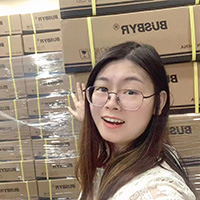News
Hybrid Inverter VS String Inverter
Photovoltaic systems convert solar energy into electrical energy through the photovoltaic effect of photovoltaic modules to generate electricity. Daily residential, industrial and commercial electricity is AC, and the variable DC generated by photovoltaic modules cannot be used directly. Photovoltaic inverter is a kind of DC-AC power conversion equipment. Its main function is to convert the DC power generated by the components into AC power that meets the power requirements of the grid, and then use it in grid connection to achieve the purpose of photovoltaic power generation. Photovoltaic inverter can directly affect the overall power generation efficiency and working stability of the photovoltaic power generation system, and is an important equipment component of the photovoltaic power generation system.
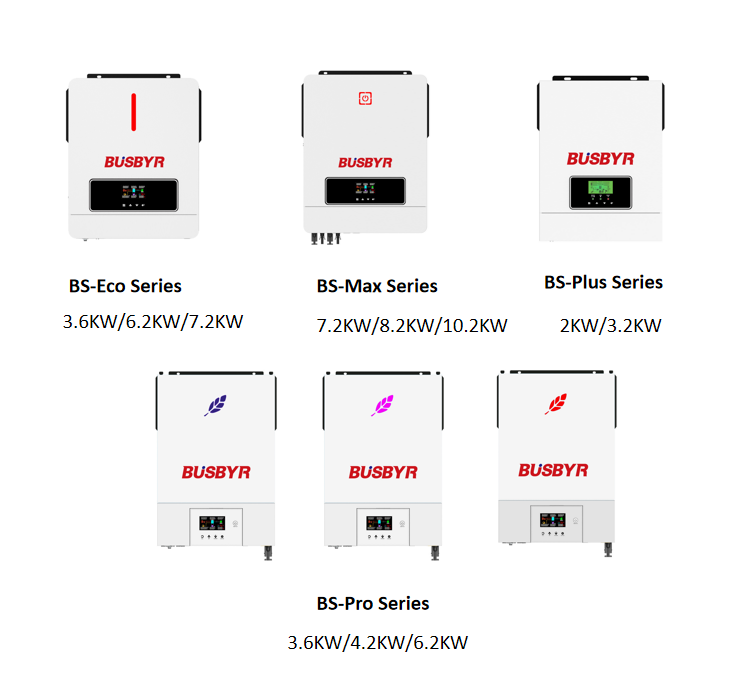
Photovoltaic inverters can be mainly divided into four categories: centralized, string, distributed and micro inverters. The total power of the centralized inverter system is large, and it is mainly used in large-scale projects such as ground photovoltaic power stations with good lighting conditions; distributed inverters can be divided into string inverters and micro-inverters, and are usually used in small and medium-sized inverters. Industrial and commercial and household photovoltaic power generation systems, among which the string type is the main type of distributed inverter product. The distributed inverter has the characteristics of both centralized type and string type, and has been applied on a certain scale in projects such as the mountain leader. The micro-inverter tracks the maximum power peak of each photovoltaic module independently, and then merges it into the AC grid after inversion. The single capacity of the micro-inverter is generally below 1kW.
What is a hybrid inverter?
Machines that can change the properties of current (AC, DC, frequency, phase, etc.) are collectively called converters, and inverters are a type of converters whose function is to convert direct current into alternating current.
The hybrid inverter is mainly a name in the optical storage industry, also known as an energy storage inverter. Its function can not only convert direct current into alternating current, but also realize the conversion of alternating current to direct current and the rectification of voltage and phase between alternating current and direct current. ; In addition, the hybrid inverter also integrates intelligent modules such as energy management and data transmission, and is an electrical device with high-tech technical content. In the energy storage system, the hybrid inverter is the heart and brain of the entire energy storage system by connecting modules such as photovoltaics, energy storage batteries, loads, and grids, and monitoring and managing these modules.
Busbyr New Energy's hybrid inverter products are mainly single-phase hybrid inverters for residential pv systems.
BS4-ECO series single-phase hybrid inverter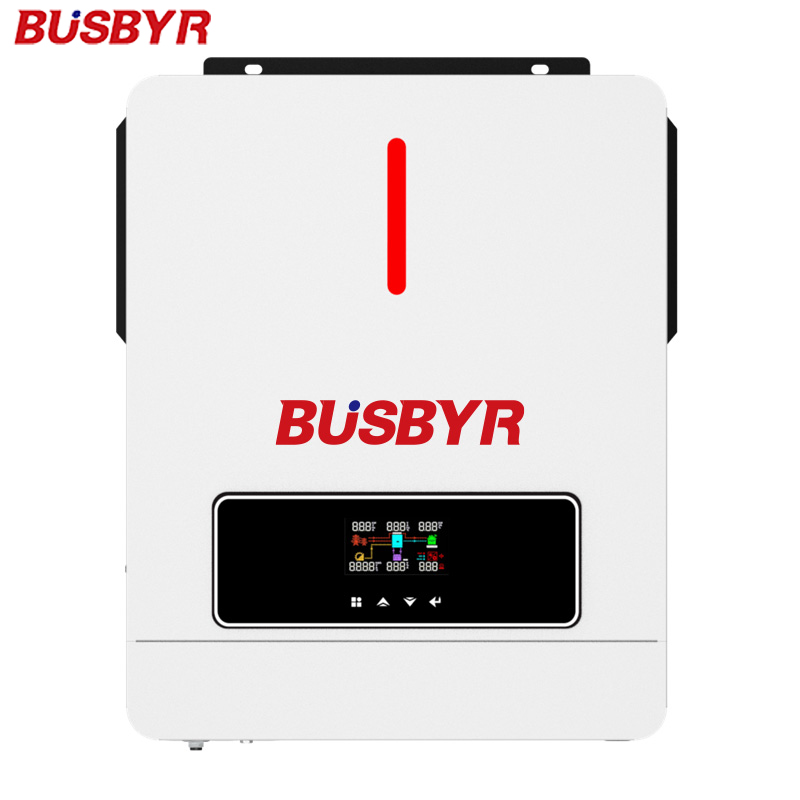
●Pure sine wave solar inverter(on/off Grid)
●Output power factor=1.0
●Support WIFI&GPRS for APP
●Inverter running without battery
●One-key restoration to factory Settings
●Built-in Lithium battery automatic activation
●Built-in 120A MPPT solar charge
●High PV input voltage range(90~450VDC)
●Built-in anti-dusk kit for harsh environment
●Smart battery charge design to optimize battery life
●Dual output
Safe and reliable
Tested and certified according to IEC/EN 62109-1/-2, IEC/EN 62477-1, IEC/EN 61000-6-1/-6-3
Passed European grid connection: EN50549-1 test certification
Passed the German grid connection: VDE4105/0124 test certification
Passed the UK grid connection: G99 test certification
Passed South Africa: NRS097-2-1:2017 test certification
Friendly and flexible
Support multi-machine parallel connection
Support diesel generator access
Compatible with a variety of battery access such as lead-acid and lithium-ion batteries
Economical and practical
Intelligent EMS management function, support cloud monitoring
Support on-off/off-grid automatic switching function to ensure uninterrupted power supply when important loads are off-grid
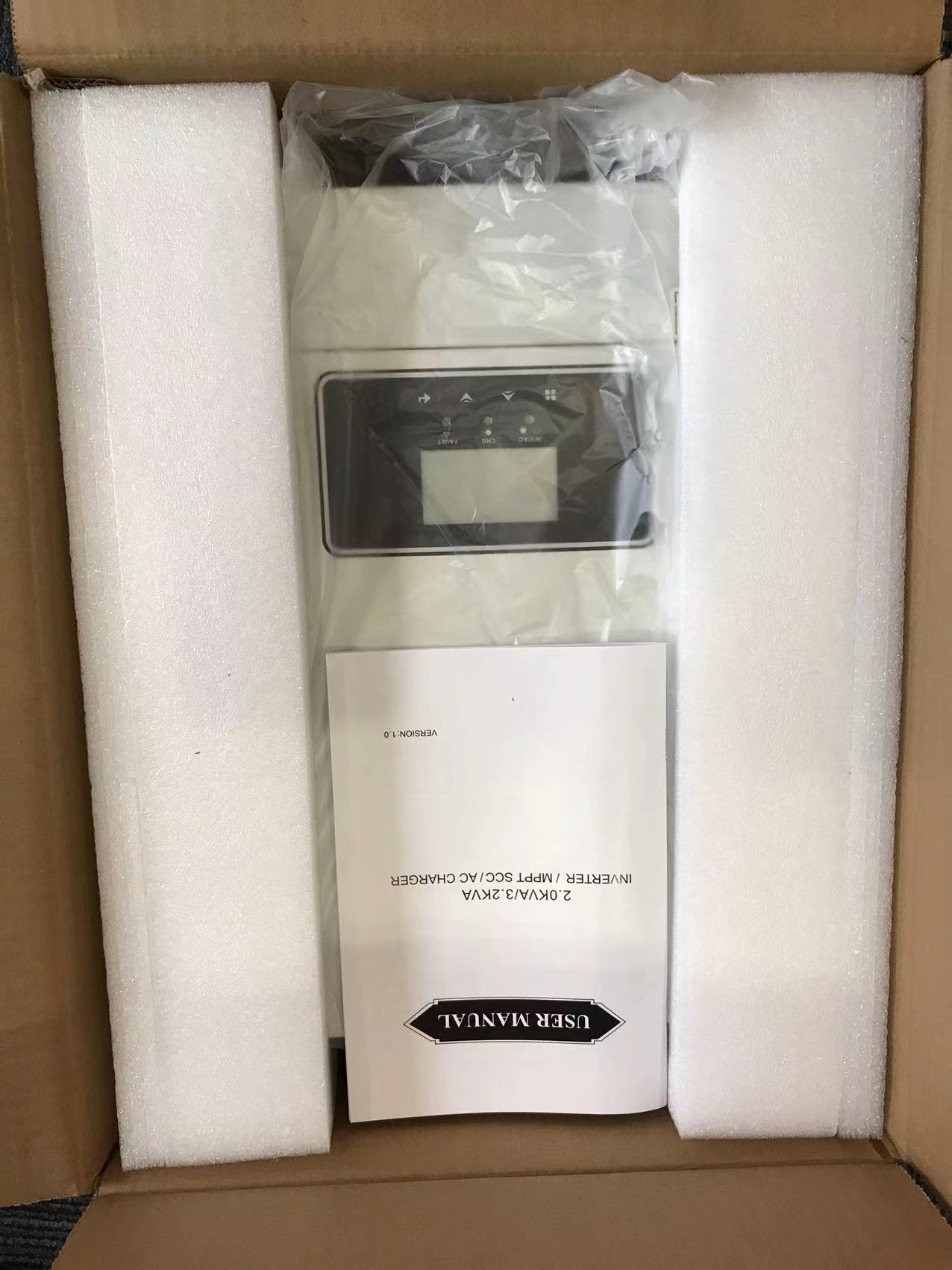
The single unit power of the string inverter is gradually increasing, and the market application continues to penetrate. With the improvement of distributed power station scale and power module technology, the power of string-type single unit is gradually increased. While high-power string inverters ensure the advantages of multiple MPPTs, the overall power is gradually approaching that of centralized inverters, which promotes the gradual improvement of its application space in centralized power plants.
The string inverter adopts a modular design to realize decentralized MPPT optimization. The power station system using string photovoltaic inverters usually converts the DC current generated by the components through the inverter for DC-AC conversion, and then merges it into the AC grid after converging, boosting and transforming, and AC power distribution. Compared with centralized inverters, string inverters adopt a modular design and have multiple MPPTs; the number of photovoltaic modules connected to each MPPT is less, usually 1-4 groups, which can realize decentralized MPPT search for excellence. Due to the small number of access terminals, when a single component fails, it will only affect the power generation of the module corresponding to the component, ensuring that the power generation efficiency of the overall photovoltaic system is not affected by a single component, and solving the mismatch problem of centralized photovoltaic power plants .
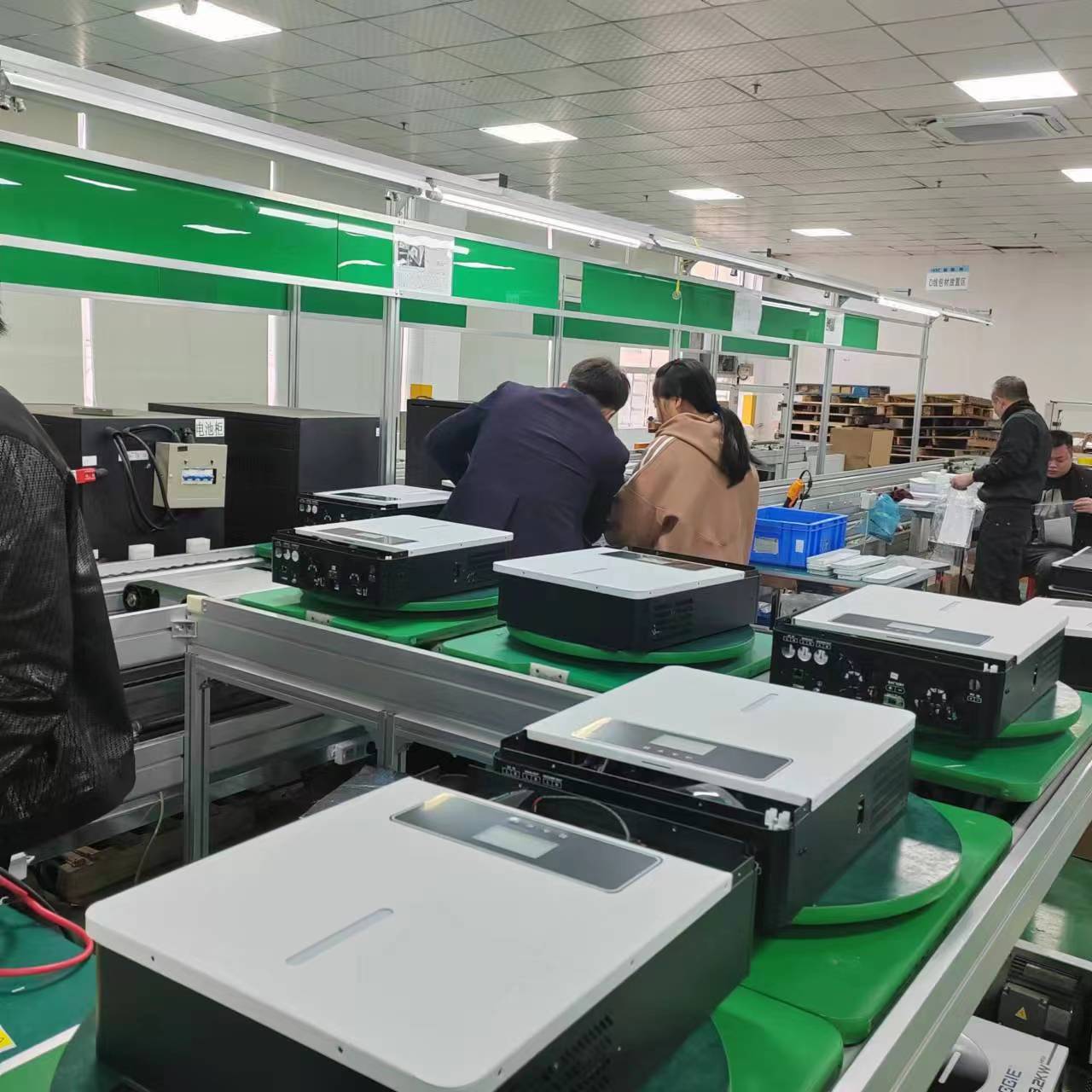
The photovoltaic inverter adds a number of intelligent functions to promote the efficiency of power plant operation and maintenance. In the early days, common photovoltaic inverters on the market only had the main function of DC to AC conversion. In recent years, the installed capacity of photovoltaic power plants has gradually increased, and the difficulty of manual inspection and operation and maintenance has also increased accordingly, and the cost is relatively high. With the continuous development of industry technology, photovoltaic inverters have gradually added functions such as data collection and manual interaction in addition to the original function of converting direct current and alternating current, which can control the inverter itself and the components and cables in the power station that are prone to appear. The important part of the fault problem is accurately monitored and detected, which saves a lot of labor costs and improves the accuracy of problem diagnosis, making the photovoltaic power plant system management more accurate, refined and intelligent.
The inverter is combined with "cloud service + APP", which is convenient for distributed users to check data in real time. Distributed photovoltaic power plants are mainly small and medium-sized industrial and commercial or household photovoltaics, mostly for self-use and self-use, so users pay more attention to data such as voltage, power, and electricity. Inverter manufacturers usually adopt the combination mode of "inverter + cloud service" to transmit relevant data to the cloud platform, which is convenient for users to read at any time. BUSBYR New Energy Technology as examples,we have realized real-time viewing of data such as power generation by users of distributed power stations through mobile APPs, making user-side detection and management more intelligent and convenient.
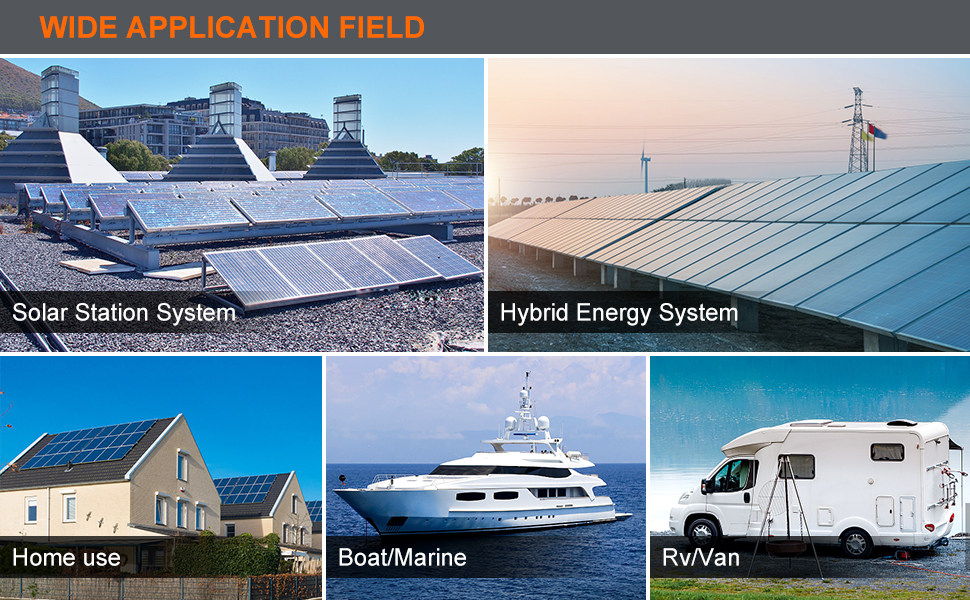
Advantages of string inverters
String inverters are suitable for photovoltaic power plants in various scenarios.
1. The string-type grid-connected inverter is small in size and light in weight, and it is very convenient to carry and install. It does not require professional tools and equipment, nor does it require a special power distribution room. It can simplify construction in various applications. Reduced footprint, DC line connection does not require DC combiner boxes and DC power distribution cabinets.
2. The MPPT voltage range of the string inverter is wide, generally 250-800V, and the component configuration is more flexible. In rainy days and areas with a lot of fog, the power generation time is long.
3. The string inverter adopts a modular design, the DC end has multi-channel MPPT function, and the AC end is connected in parallel to the grid. The best operating point does not match the inverter, which maximizes the power generation.
4. The string type also has the advantages of low self-consumption, small failure impact, and convenient replacement and maintenance.
5. The string inverter adopts a modular design. Every two strings corresponds to one MPPT. The DC end has the maximum power tracking function, and the AC end is connected in parallel to the grid. The advantage is that it is not blocked by module differences and shadows between photovoltaic modules. impact, while reducing the mismatch between the optimal operating point of the photovoltaic module and the inverter, and maximizing the power generation.
6. The MPPT voltage range of the string inverter is wide, generally 200-1000V, the maximum currently reaches 600-1500V, and the component configuration is more flexible. In rainy and foggy areas, the power generation time is long.
7. The string inverter is small in size and light in weight, and it is very convenient to carry and install. It does not require professional tools and equipment, nor does it require a special power distribution room; it can simplify construction and reduce land occupation in various applications ; DC line connection does not require DC combiner box and DC power distribution cabinet, etc.
8. The string inverter has low self-consumption, low failure rate and more convenient maintenance.

